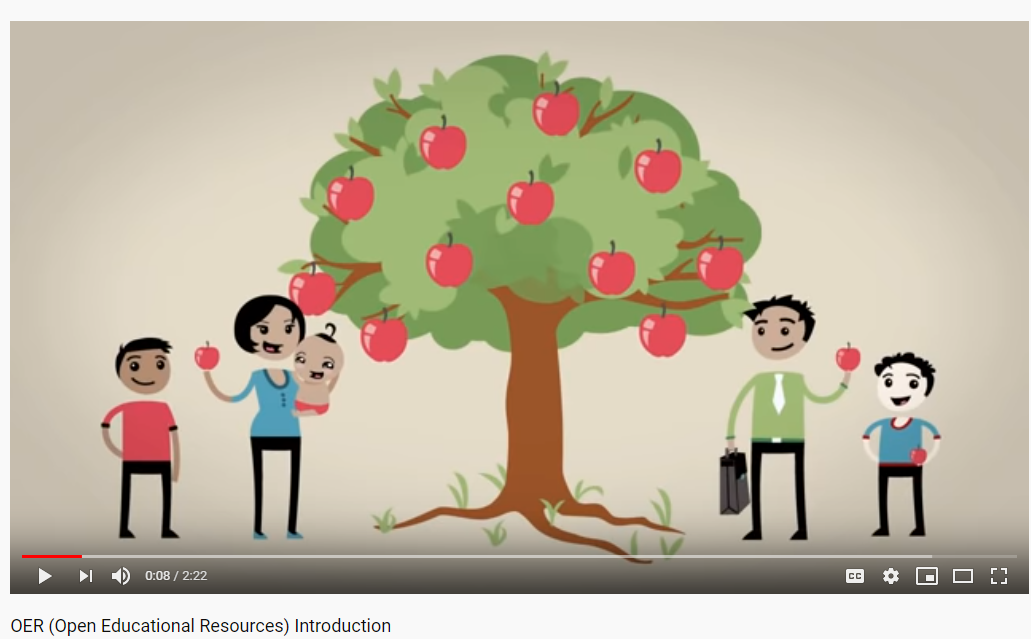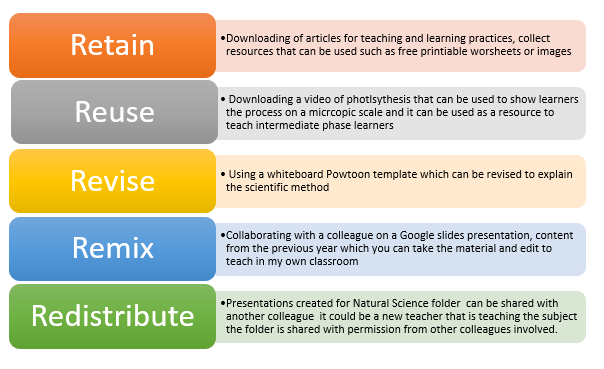
The video is an introduction to using Open Education Resources (OER), the video refers to education being costly and not easily accessible as well as material not being updated which can have serious implications on learning such as the learner not getting the actual knowledge that they need to pursue higher degrees. In South Africa there is a divide between public and private schools. The private schools are often equipped with the latest technology and new textbooks while on the other hand public schools are not well resourced with textbooks or equipment needed to learn content and in in some case there are no libraries. A solution to this problem can be using open educational resources (OER) to bridge the gap between these two worlds.
According to the Organisation for Economic co-operation and development (OECD) defines OER’s as digital materials which are placed on the internet and are accessible to educators, students and self-learners which gives permission to use or reuse the content freely with the rights given by the creator to do so under a creative common license. Since there is a divide in South Africa with regards to material, it will be beneficial to make pre-service teachers aware of OER’s and how it can be used in their teaching practices if they are placed in a low – resourced school and since I am a Natural Science lecturer I can direct pre-service teachers to using OER in their classroom. I can use David Wiley’s 5 R activities to show a model that uses OER’S in the natural science classroom (Wiley, 2014).

Adapted from Wiley, 2014 5R activities
When using the 5R’s we must also know that content can also be used, modified or distributed according to a creative commons license. There are six licenses which according to Mishra (2017:372) only four can be used to either revise, reuse, remix, retain and redistribute content for Natural Science and my students can use it in their own teaching practices in order for their learners to engage with the content. The license assists with reducing copying and using other colleagues work illegally, in the academic space we need to make students aware of plagiarising other’s work which is a serious offence and realise it is not ethical to use work that is not yours.
In my opinion the best way for students to fully understanding OER’s will be to join a MOOC in this way the students can be exposed to a diverse and rich knowledge, they can also learn the value of sharing and making content available to others and realise that it’s not just about monetary value and that many people in the world can benefit from the material which can be shared when it is open for everyone in this way knowledge can grow , be up to date and accessible to all when using digital technologies (Mishra, 2017:372).
Mishra, S. 2017. Open educational resources: removing barriers from within. Distance Education, 38(3): 369-380. [Online]. Available at:
OER (Open educational resources) Introduction. YouTube video, added by Blink Tower. [Online]. Available at
Wiley, D. 2014. Open content. [Online]. Available at